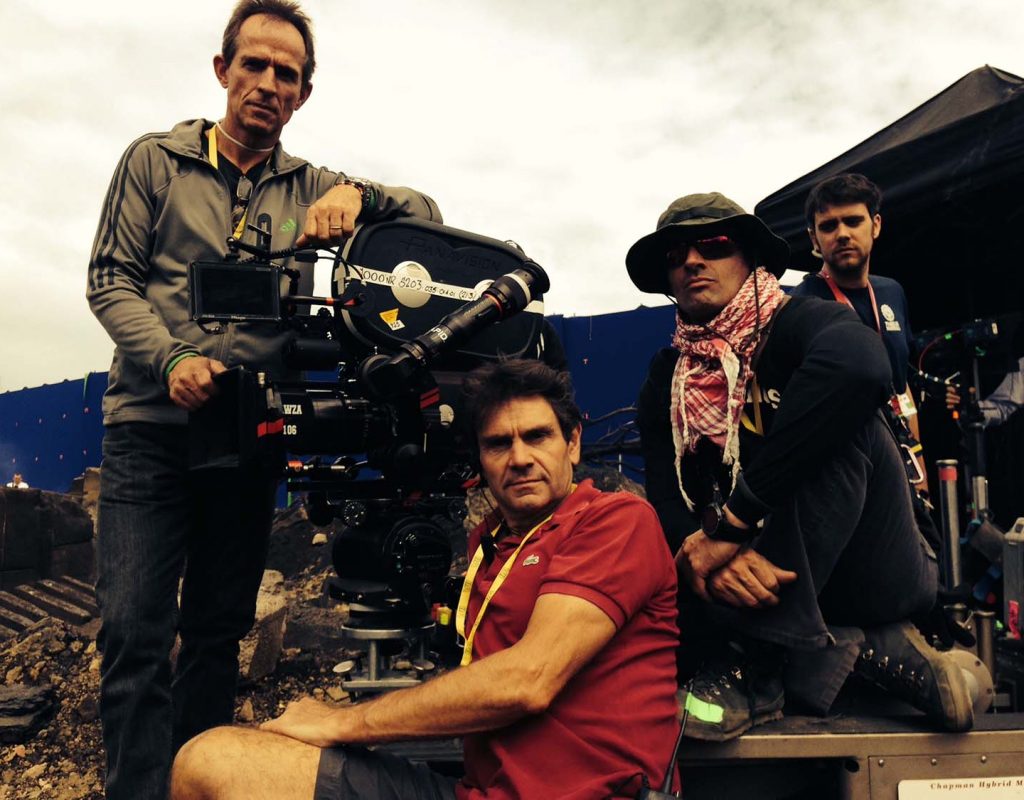Sony’s XDCAM HD optical camcorders have performed in a range of challenging environments – from extreme weather to combat zones around the world. Its latest test under fire was a six-week shoot in Southern Helmand, Afghanistan, where a four-person production team from National Geographic Television, led by experienced DP Thierry Humeau, was embedded with the 2nd Marines Expeditionary Brigade (MEB).
The show “Camp Leatherneck,” recently aired on National Geographic Explorer series. The program’s goal was to go past the newspaper headlines and TV news accounts, and document what it is really like to serve on the front lines of this conflict.
Sony’s XDCAM HD optical camcorders have performed in a range of challenging environments – from extreme weather to combat zones around the world. Its latest test under fire was a six-week shoot in Southern Helmand, Afghanistan, where a four-person production team from National Geographic Television, led by experienced DP Thierry Humeau, was embedded with the 2nd Marines Expeditionary Brigade (MEB).
The show “Camp Leatherneck,” recently aired on National Geographic Explorer series. The program’s goal was to go past the newspaper headlines and TV news accounts, and document what it is really like to serve on the front lines of this conflict.
“It was a six-week total immersion into the experience of the war in Afghanistan: the heat, the violence, the dust, the misery – and the day-to-day mission – of the Marines,” said Humeau.
For this project, Humeau and his team were trying to achieve a very specific look, in terms of style, feel and, of course, image quality. To complement his use of the XDCAM HD PDW-F800 camcorder, they also used Sony’s smaller XDCAM EX (PMW-EX1) solid state memory camcorder. Both cameras complemented each other seamlessly, and the footage inter-cut well in the final product.
“National Geographic is well known for its programming and picture quality and the network is always on the lookout for the best professionals and the best equipment,” Humeau said. “I decided to use [the F800] to capture the core of the show whenever portability and environmental conditions were appropriate. We also knew ahead of the assignment that we will have to go ‘outside the wire’ and for these difficult and often perilous missions, I needed a more compact and agile camera with an image quality that would mix well with footage shot on the F800. The PMW-EX1 XDCAM EX camcorder was a natural choice. It is the most compact ½-inch HD imager camera available on the market, offers excellent picture quality and has low power consumption.”
The PDW-F800 camera was equipped with a Sony Dual Channel Digital Wireless system which included a DWRSO1D receiver unit mounted in the camera, two DWTB01 belt pack transmitter and one DWTP01 Plug-In transmitter.
“War theaters are crowded with all sorts of radio transmission or jamming frequencies and having a frequency-agile system was critical to quickly switch frequencies whenever necessary,” Humeau said. “Being able to do this from a single end using the DWRSO1D unique wireless remote control feature was a huge convenience.”
The PMW-EX1 was equipped with a single-channel, UWP series wireless system, and all wireless beltpack transmitters were paired to Sony ECM-77 lav mics.
During the production of “Camp Leatherneck,” Humeau and the team were often shooting in varying light conditions – day, night, interior, exterior, bright sunlight, low light. Despite the continuous, harsh conditions, both cameras performed flawlessly, He noted that their mobility was also key since they were often shooting on the run.
“War zones are often demanding environments for persons and equipment,” he said. “The Helmand province in Southern Afghanistan is a very harsh environment of desert lands where temperatures can reach well over 120F in the summer. The thin crust on the ground covers a thick layer of very fine ‘moon’ dust that, once broken by footsteps or vehicle tracks, flies all over the place. In my 30 years of assignments, I had never experienced such a hostile working environment. I knew that aside from the looming road bombs and insurgent attacks, dust and heat would be my other enemies.”
He had used the XDCAM HD and XDCAM EX cameras on previous projects for Nat Geo and fully trusted taking those cameras on this new adventure. The producers were concerned about equipment failure and just to be safe, the crew took a spare PDW-700 camera body.
“On my first days of shooting, I used rain covers to protect the cameras from dust,” he said. “These were not very practical and I stopped using them because at the end of the day, protected or not, the camera would be covered with dust. On documentary shoots, for the “run and gun” type situations, I am very reluctant to use any additional light because I like to preserve the look, drama and feel of low light situations. Both the PMW-EX1 and PDW-F800 offer excellent performances in low light and even with 9db or 12db of gain, the amount of noise is minimal. Over the course of five weeks and 50 hrs of filming, both cameras held up to the task. I had no failures or downtime to report and never had to un-pack the backup camera.”

Filmtools
Filmmakers go-to destination for pre-production, production & post production equipment!
Shop Now













